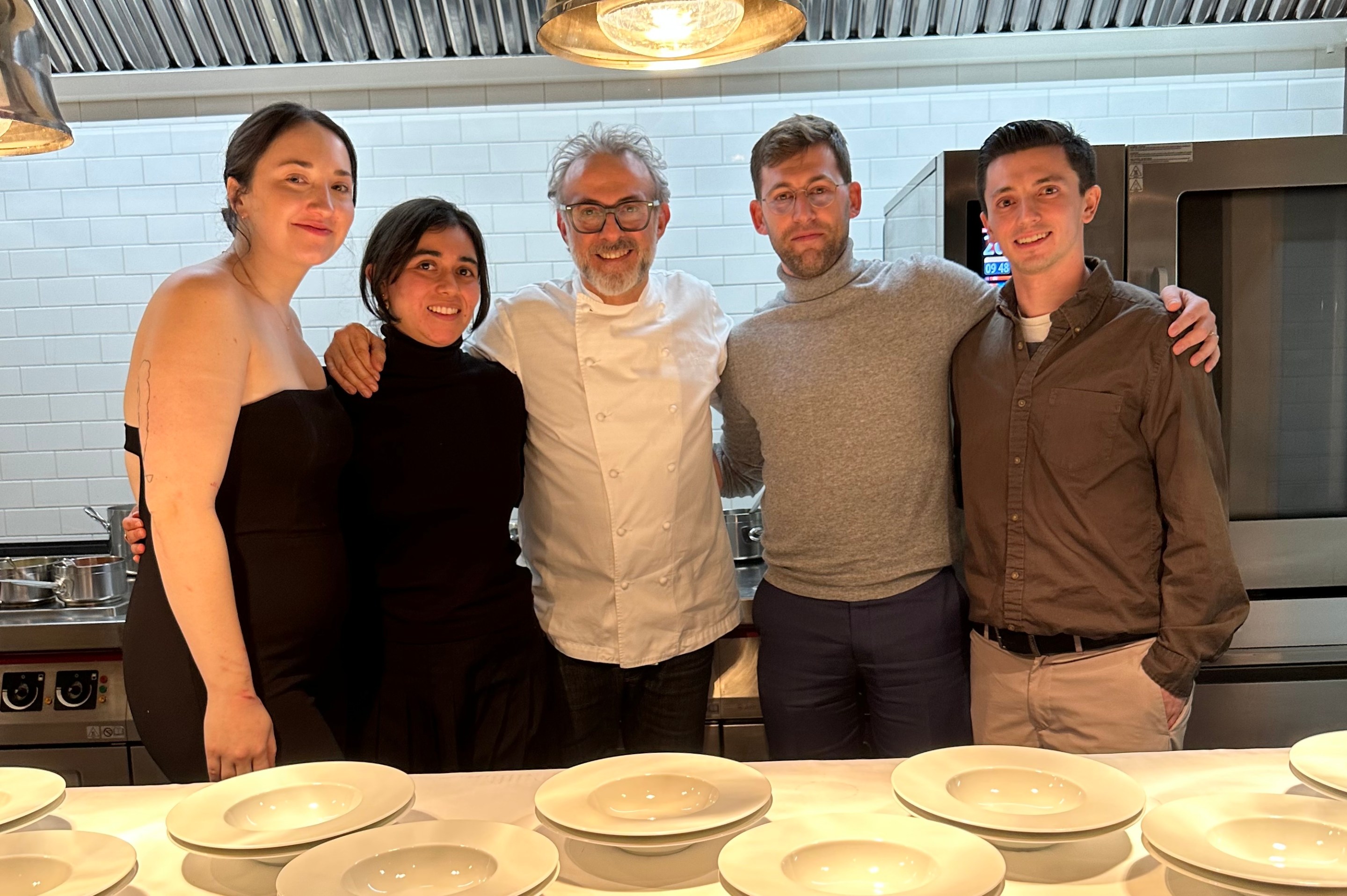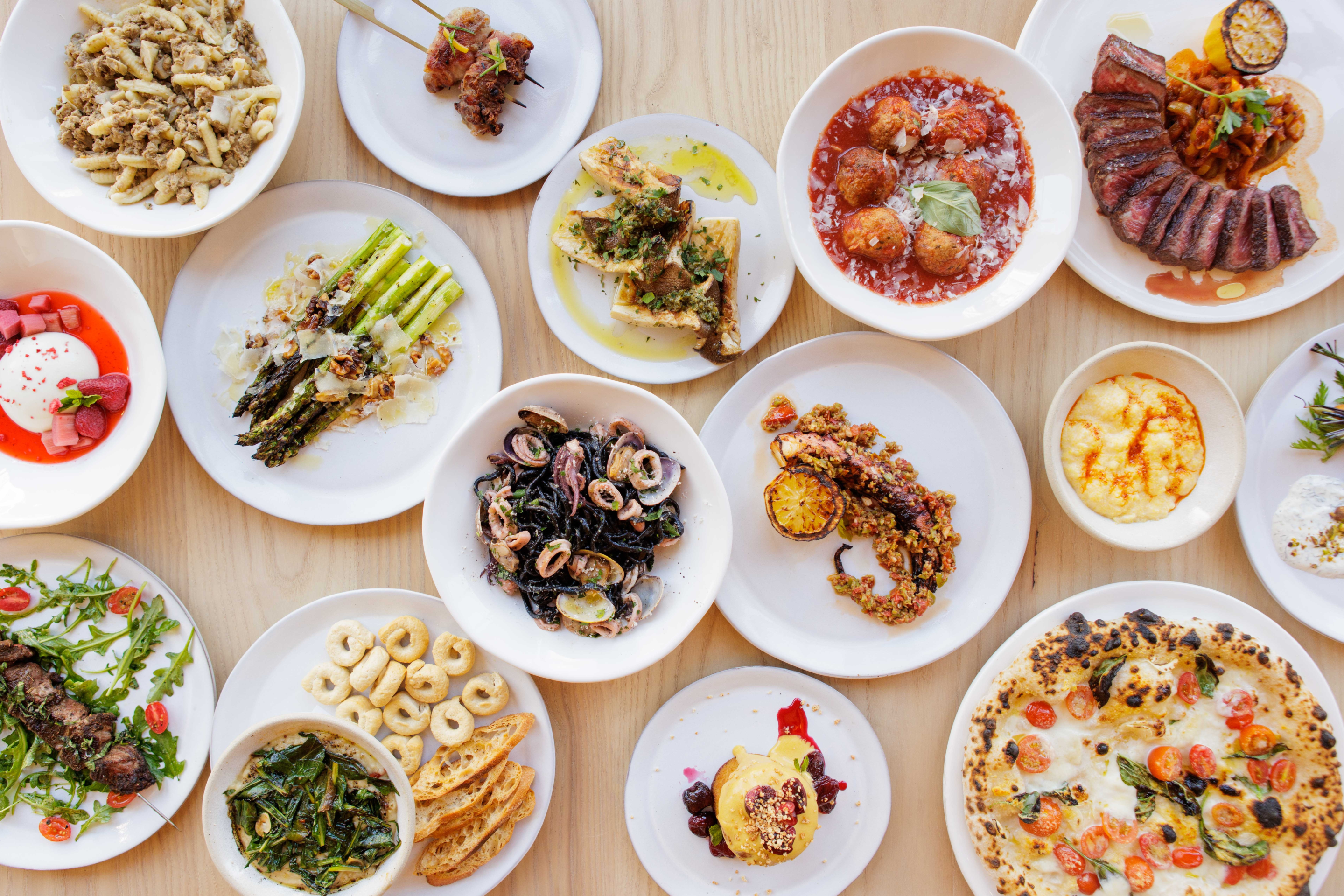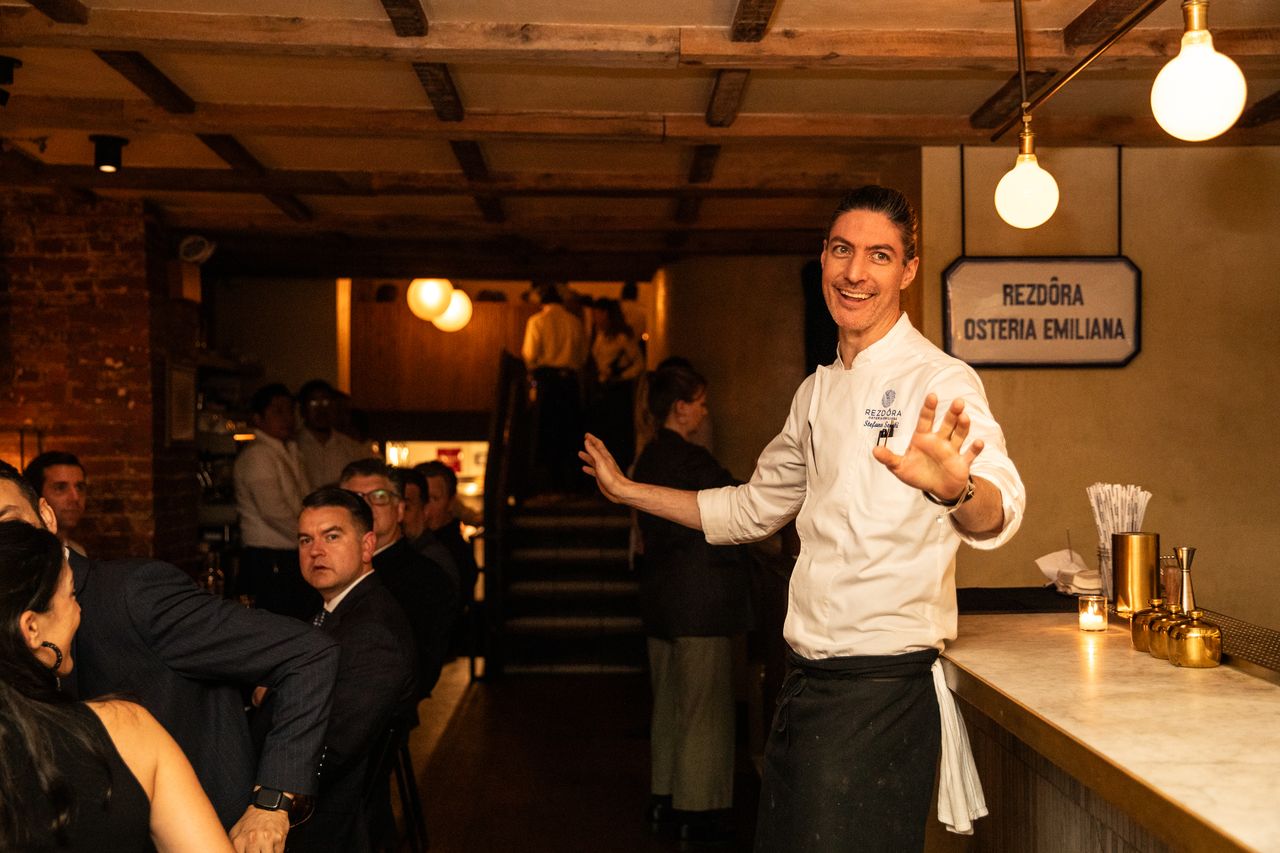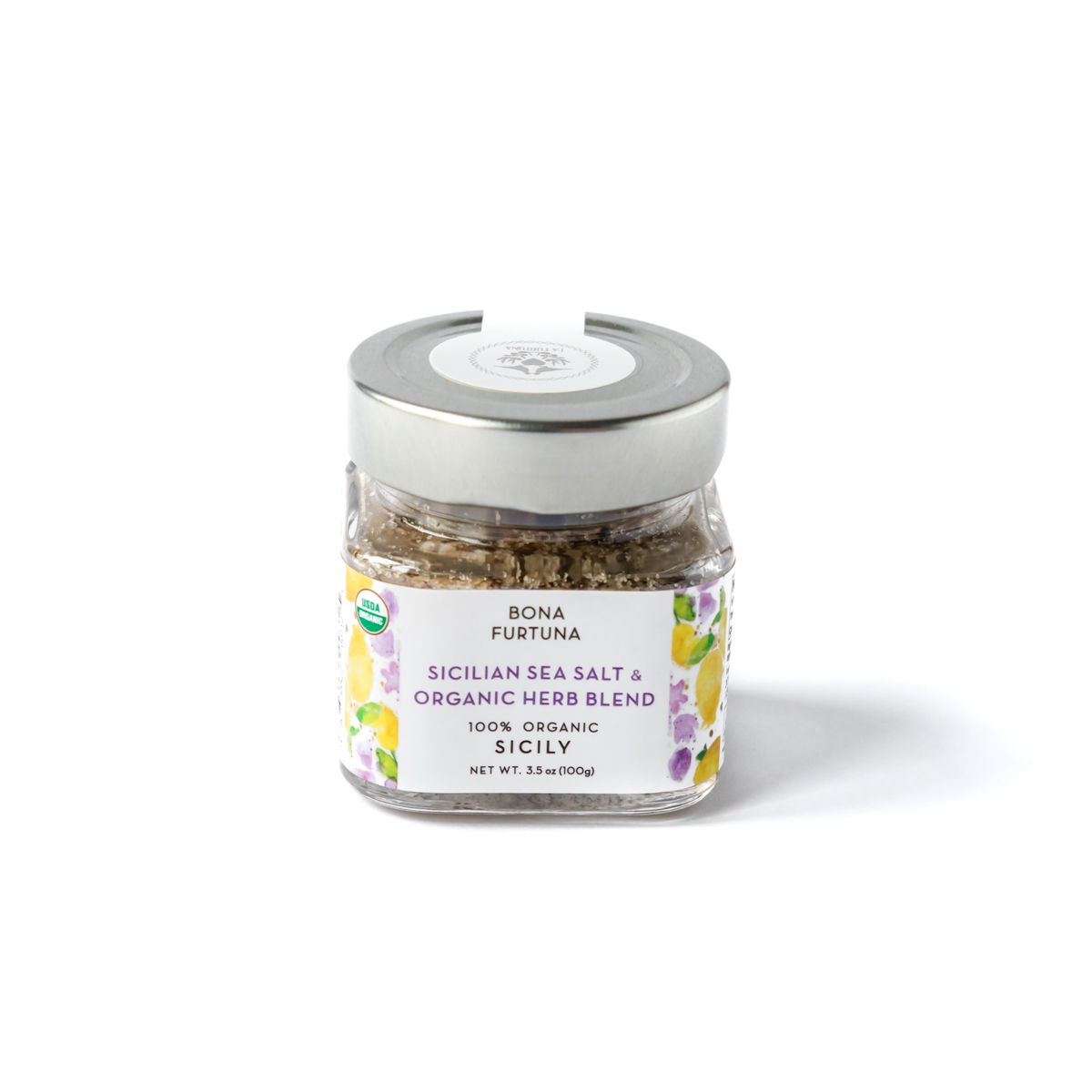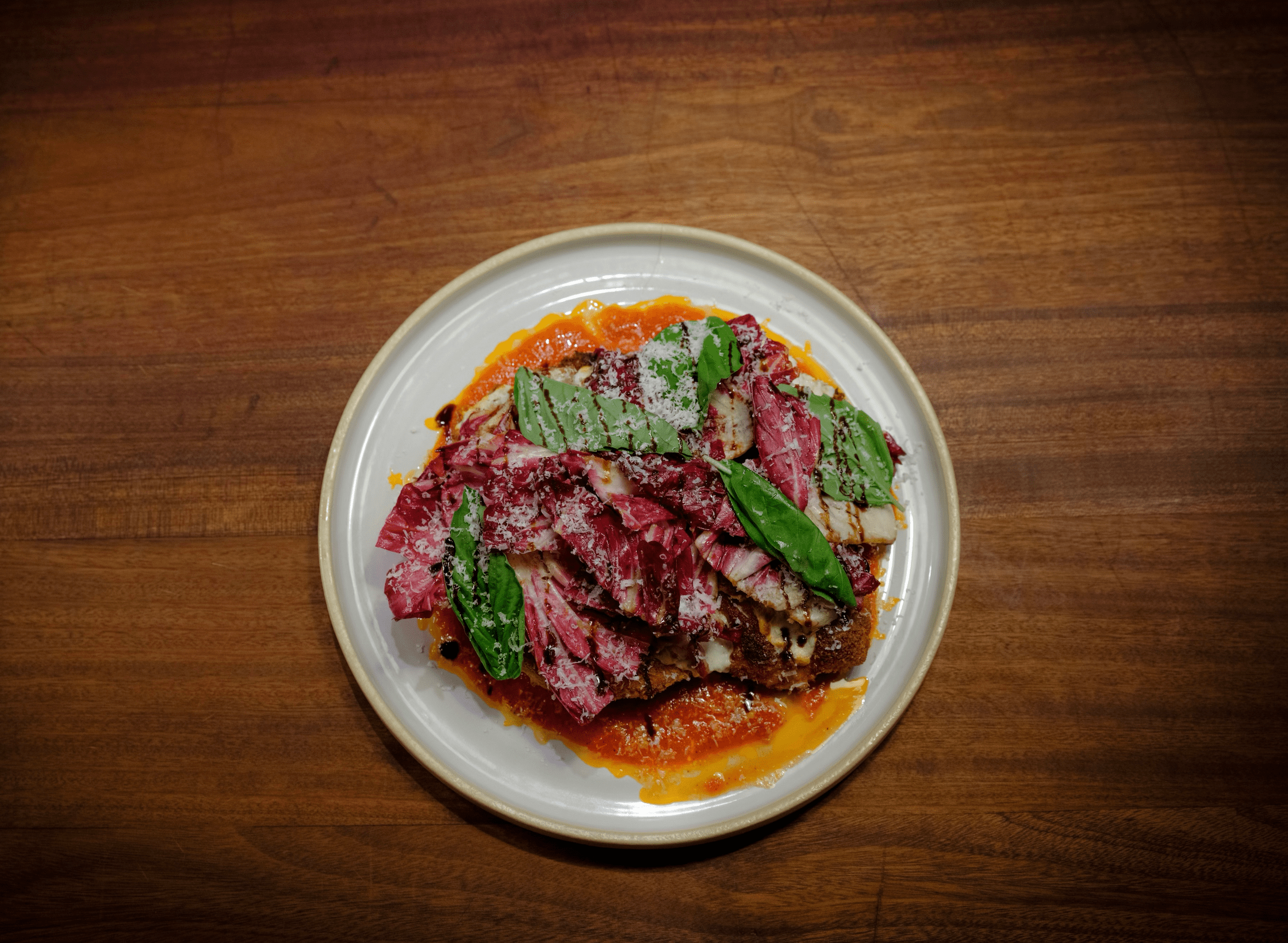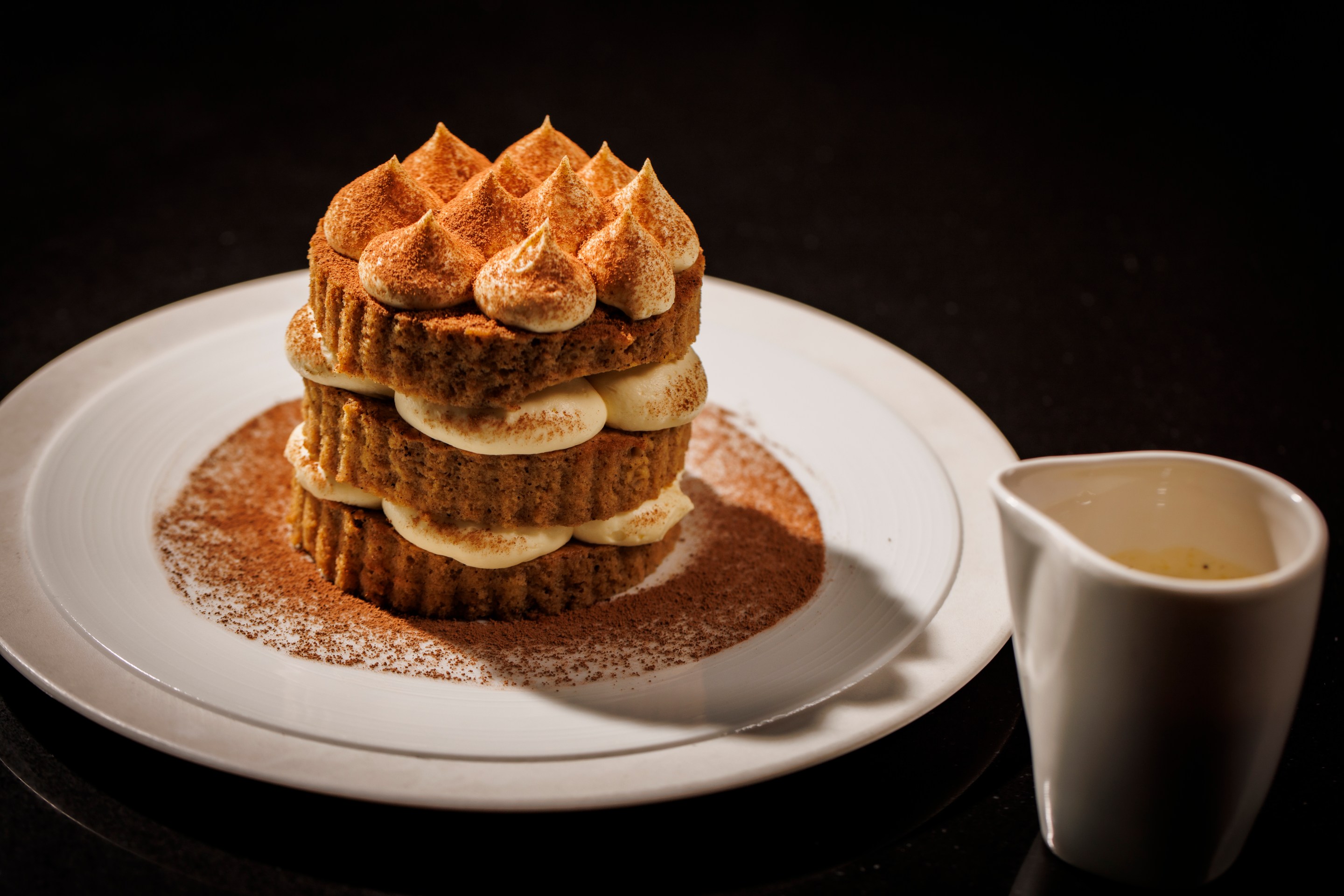Described as a “Roman trattoria planted in New York City,” Forsythia is a charming restaurant on Stanton St. that embraces Italian simplicity and conviviality. Elegant yet unfussy, chef/owner Jacob Siwak’s three-year-old restaurant features exquisite pastas, a thoughtful selection of wines, and attentive and knowledgeable service.
It could also be described as a new school Italian restaurant with an old soul. Turns out that’s no accident. Siwak, who grew up in St. Louis, then attended culinary school in New York City and worked in kitchens in Brooklyn and in Rome, somewhat quietly has created a Manhattan restaurant with the type of community vibe that you find in a neighborhood fixture trattoria in the Eternal City. Forsythia offers its à la carte menu, tasting menus, and even weekly pasta classes to its growing clientele, and Siwak and his staff continue to look to Rome for inspiration. (The restaurant even will make any of the famed four pastas of Rome upon request.)
In early January 2024, Siwak and 10 Forsythia employees—a mix of front-of-house and back-of-house—traveled to Italy, and cataloged the trip for Appetito. Read on for his explanation of why he organized the trip, and the travelog from Siwak and his team as they visited not only Roman trattorias but farms and wineries in the Emilia-Romagna countryside, as well as a stop at Massimo Bottura and Lara Gilmore’s new farmhouse near Modena. (Forsythia general manager and wine director Charlotte Mirzoeff also contributes.)
Please explain the reason behind this and other staff trips.
It's twofold. First, it's largely to learn. That can apply to a few different things — food, wine, and culture — but at the end of the day it all comes back to the same thing, which is just learning new things. Second, it's a great opportunity to bond as a team. Most corporate workplaces have regularly scheduled programming after the workday is over: happy hours, team-building events. However, that's something that is difficult to schedule in hospitality. So the Italy trip, farm trips, those sort of days are great for us to grow closer with each other outside of work.
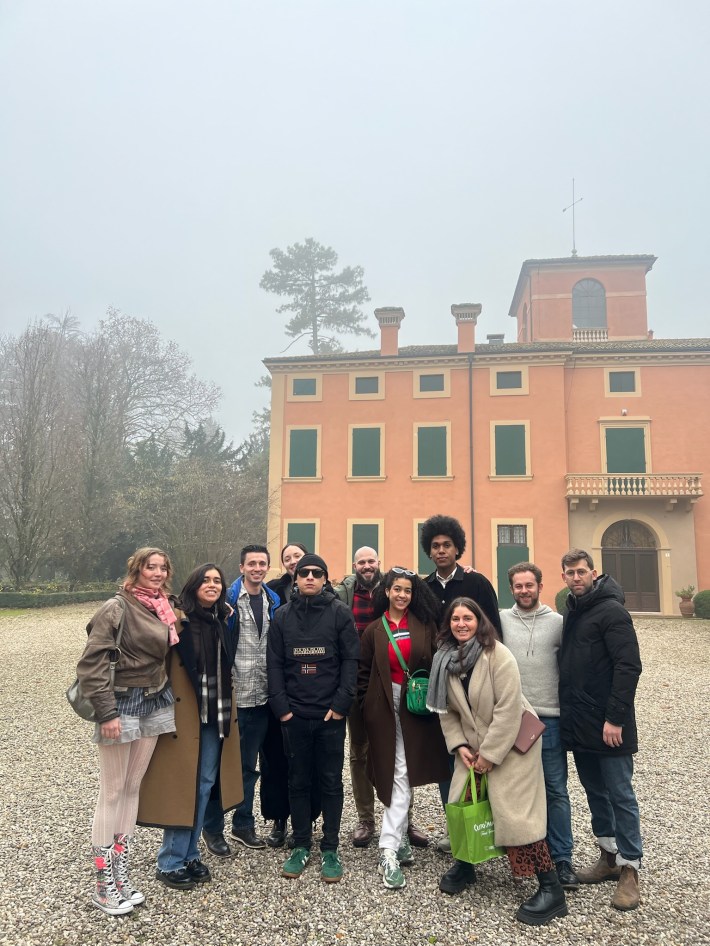
How do you decide where to go and who organizes the trips?
I plan the whole trip! (It's a lot of work.) I try to show a real mix of things, with the common thread being some sort of true expression of that region's food. I try to schedule days that we visit extremely traditional restaurants at lunch and then more modern or refined restaurants at dinner (or vise-versa) to show how one dish can be made traditionally and then also reinterpreted. We usually splurge for one fine dining meal, and try to visit some of the famous trattorias of the Italian countryside.
What do you hope that your team takes away from the trip?
There is nothing in particular I am looking for people to take away. Someone that is on their second or third staff trip and fifth or sixth visit to Italy overall will have such a different takeaway from someone that has never been to Europe that hoping for one singular takeaway group-wide isn't really realistic. Other than having time to relax and have fun, I am hoping that people return to New York and Forsythia reinvigorated to elevate our service, be it through new dishes, new wines, or new elements of service. There are always things we can be bringing back from our experiences to the restaurant in New York, and my general hope is that people will return excited to implement those things, and feel a new passion for Italian hospitality.
Day 1:
We arrived in Rome mid-day on Monday and spent the first few hours of the trip acclimating. Everyone checked into our Airbnb and took the morning to explore the city.
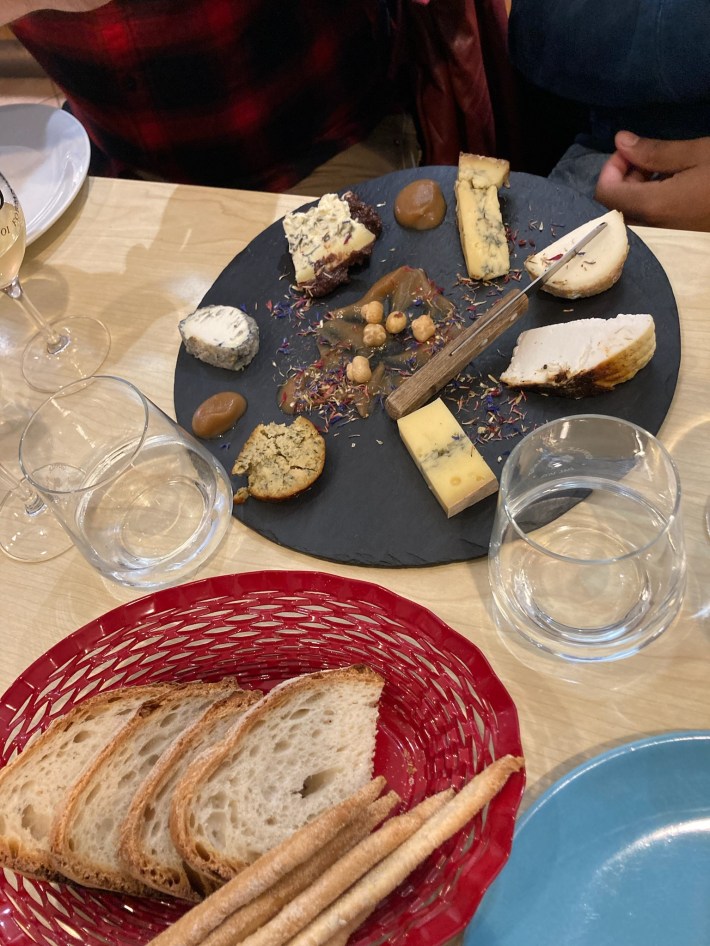
We met back up in the early evening at Beppe I Suoi Formaggi (Beppe and his Cheeses), a famous cheese shop in the Jewish ghetto. We were able to try cheeses from all over the country, with a focus on Lazio, and to drink the first of many delicious wines. We went from there to Seu Pizza Illuminati to try Roman pizza and suppli. One of the pizza flavors that stuck out was the Amatriciana, a delicious riff on the classic! We also tried classic suppli as well as creative interpretations like lasagna suppli.
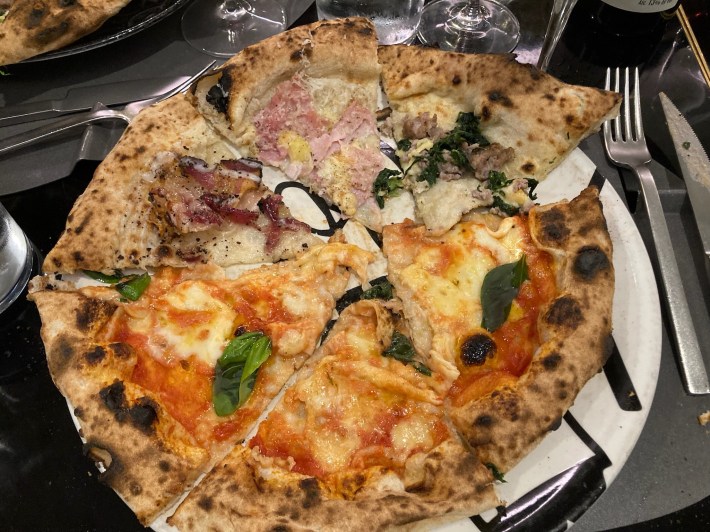
Day 2:
The only plans were lunch and dinner, and two different styles of trattoria. Lunch was at Piatto Romano, a true classic, while dinner was at Santo Palato, a more modern interpretation of what a trattoria is.
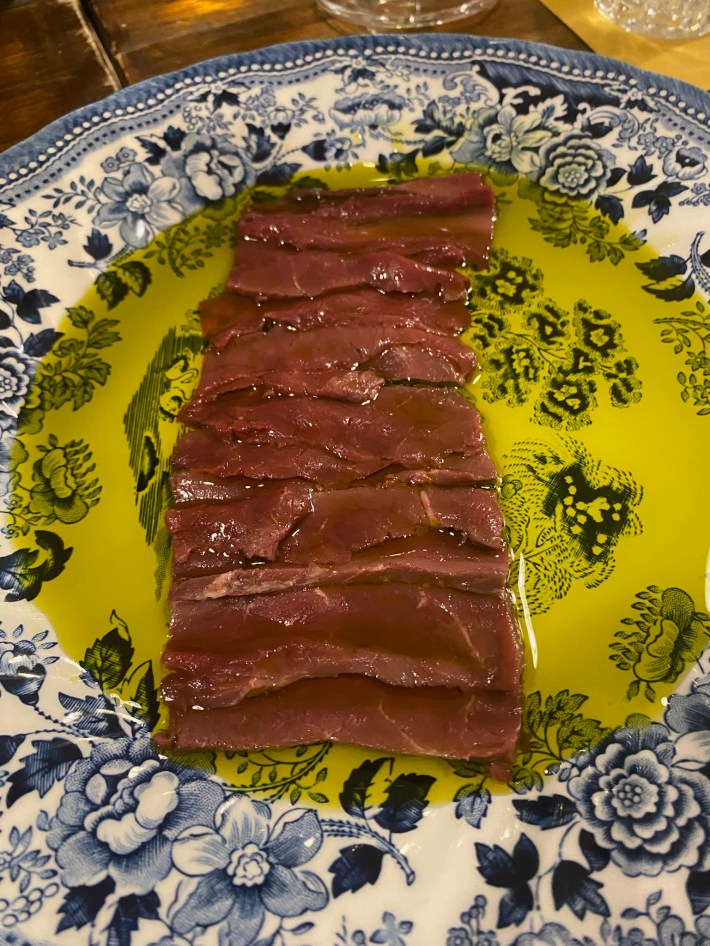
At lunch, we had all of the classic pastas, including Pajata, one of my favorites, made with unweaned veal intestine from a cow that has only ever eaten its mother’s milk. When you cook it, the milk inside the intestine curdles into a soft cheese in the cooking process. We also tried cacio e pepe, and at dinner more of the same, a little reinterpreted, along with some cool dishes like a smoked beef heart. (We took inspiration from what we tried and now have a roasted beef and smoked beef heart appetizer on our menu. The beef heart gets a hard sear on the exterior before being sliced thinly and served.)
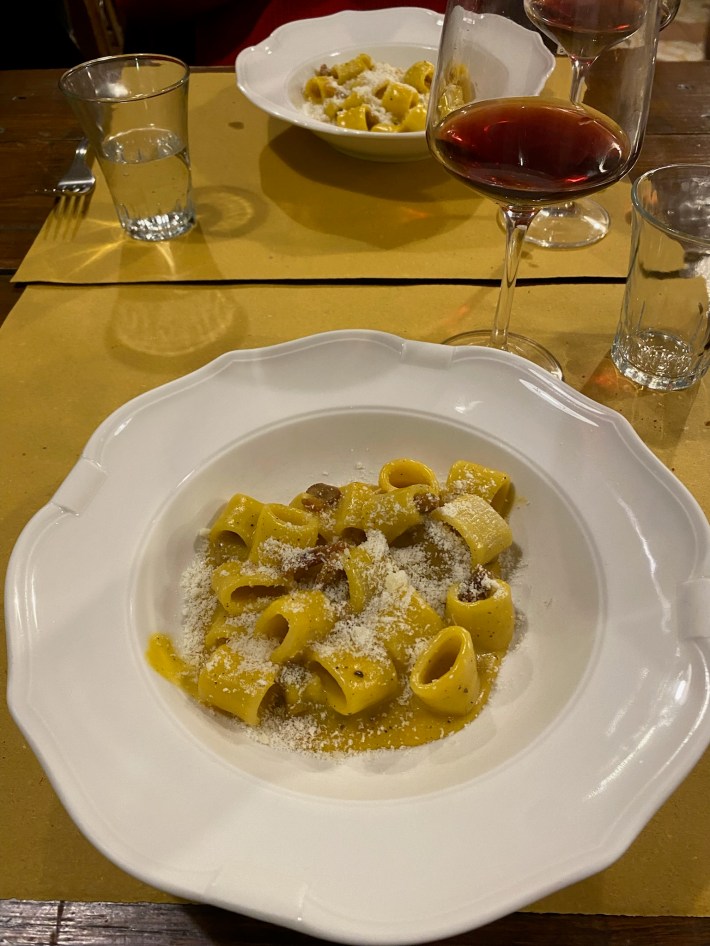
Because I had worked at Santo Palato, we were able to arrange a custom tasting menu so everyone could try a nice range of dishes. We didn’t even order. They just brought food out and cooked for us. I think that’s when you get the truest version of someone’s restaurant style and cooking — they are just preparing their favorites. I specifically really wanted everyone to try the carbonara and the amatriciana. It was so enjoyable.
Day 3:
On Day 3, we departed Rome and left for Emilia-Romagna by train.
Some of us spent the day hanging in Bologna, and some of us went to a vineyard in the countryside.
Charlotte Mirzoeff: The beverage team rented a car and drove to Terrevive winery about 20 minutes outside of the city of Modena. Gianluca Berganti owns and runs the property, which is much more than just a vineyard. He grows cereals, vegetables, and raises livestock. We met his donkeys Violetta and Piero! We toured the property while Gianluca told us about the area and history of making Lambrusco. He showed us his cellar, which consists of six large cement tanks for resting. The tanks are painted by friends of his who are Modenese artists. He took us into the fermentation room and led us up to a wrought-iron balcony where he had artwork, cellaring wine, and a nice spread for us under candlelight — very romantic! We tasted through his lineup of Lambrusco and one white sparkling while snacking on cured meats made from the animals on his farm, and crackers made from the cereals he grows. Gianluca was super generous and inviting!
Jacob Siwak: Those of us that stayed back in Bologna shopped for some new pasta tools, and relaxed with some lambrusco and mortadella at La Baita Vecchia Malga.
That night was a special one - the line cooks and I had dinner at Casa Maria Luigia, and the rest of the team dined at Osteria Francescana. Our dinner plans were supposed to be a surprise but I got too excited and told everyone what we were doing three months before our trip. Both our groups were able to meet Massimo in person and were able to have incredible learning experiences.
At Casa Maria Luigia, the experience is designed to emulate Massimo’s mom’s house. We hung out in a room that has a kitchen island where you can go in and help yourself to some snacks. They’ll make you a cocktail right there. It felt so hospitable and welcoming in a genuine way. Before our meal, we got to tour the grounds, including the facilities where they make vinegars. Not a lot of chefs get to bond with their line cooks like that, so it was really special for me to be able to share that experience with my team.
Day 4:
Day 4 started with the option of another vineyard trip in Emilia Romagna.
Mirzoeff: At Cleto Chiarli we saw a very different take on Lambrusco production! This winemaking family has been producing Lambrusco since the 1300s. They are now producing millions of bottles a year and their facility is large and impressive. They also make DOP Modena Balsamic which we were able to enjoy with Parmigiano Reggiano while we tasted the wines.
Siwak: After our morning visiting a large Lambrusco producer, we were treated to a private lunch at Amerigo 1934, a little trattoria in the foothills of Emilia-Romagna. This was unanimously the favorite meal of the trip!
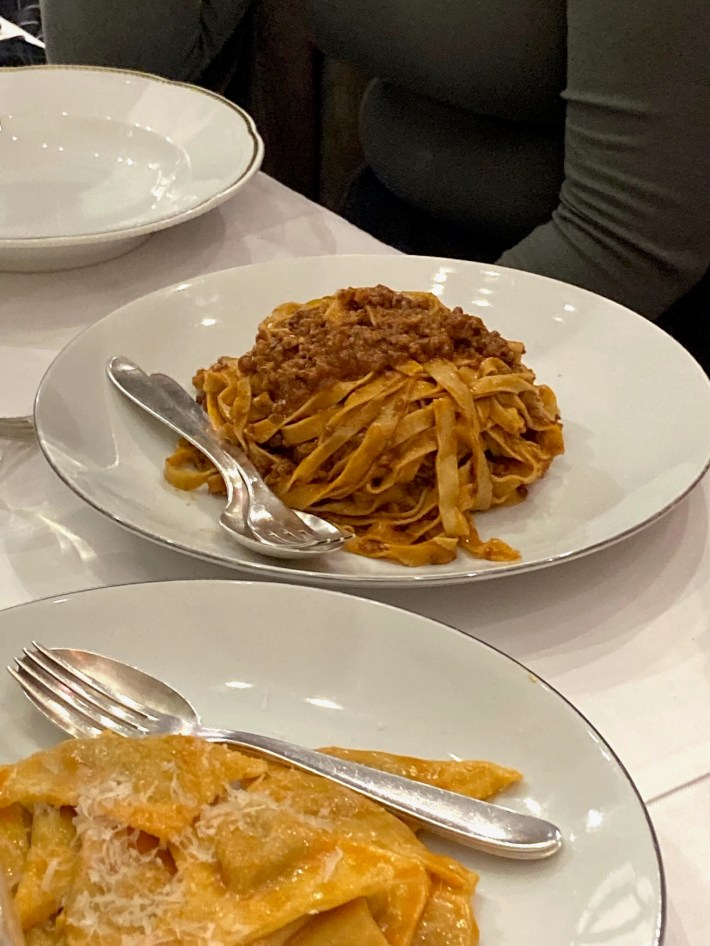
They typically aren’t open for Friday lunch but they made it happen for us. It was amazing to see them do prep in the kitchen and make pasta for dinner service while they were hosting us.
The combination of refined flavors with traditional dishes in a private setting and the intimate explanations of the plates and pastas from the owner Alberto was incredible. The tortellini in brodo was one of the most memorable bites of the trip — and now we make our tortellini at Forsythia just slightly differently in homage to Alberto’s. He fortifies his chicken stock with beef bones to add an extra layer of flavor — this very specific richness — that just coats your mouth.
Day 5:
Our lunch on this day, back in Rome, was the first sub-par meal of the trip. It may have simply been fatigue from eating non-stop for the several few days leading up to this meal, but it did seem like a lot of the food, for the whole group, was a miss. This was a much more modern restaurant, and essentially a polar opposite to the meal we’d had the previous day. It was a restaurant called Orma, not far from where we were staying in Prati.
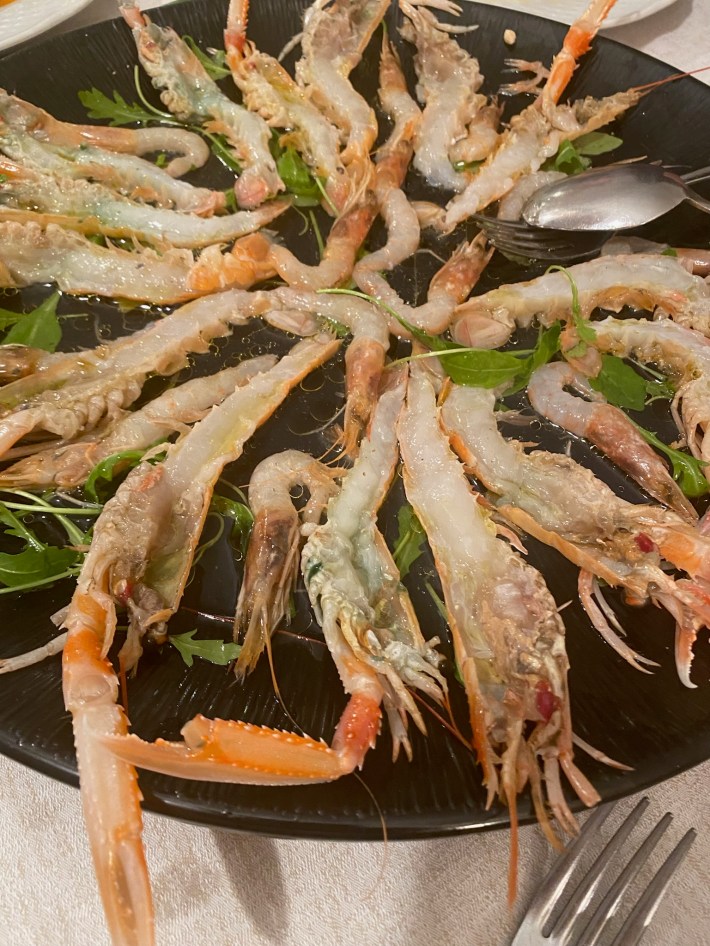
That night we tried another new restaurant to me, this one much more popular amongst the group. We went to a little seafood trattoria called Profumo di Mirto, which focused on the seafood of Central Italy. We had a lot of shellfish that was simply prepared. We also tried dishes like a lasagna that was made with fish and artichoke, as well as a fish crudo that came with collars.
Day 6:
Our last day! We spent the morning traveling back out to the countryside for our last vineyard tour, at a producer named Alberto Giacobbe.
Mirzoeff: Alberto is a third-generation winemaker who is the first generation to bottle and sell the wine. Some call him a visionary and the future of Lazian wine. He treats the grapes he grows with high regard and lots of care. We were able to see first-hand how his property is cut down the center by a DOC line separating Piglio and Olevano Romano. Alberto uses this line (potentially controversially!) to create two distinct and breathtaking cesanese bottlings. As he is looking forward, Alberto has started to produce a skin contact white from the Passerina grape for export.
Siwak: We ventured from there to a very well-regarded trattoria in the outskirts of Rome called Sora Maria e Arcangelo, where one of our line cooks has worked. We had a great meal there before a final afternoon exploring the city, and a final trattoria meal at Trattoria Pennestri back in Rome.
On Tuesday, April 2, Forsythia hosts Lutèce, the celebrated Washington DC neo-bistro for one night only, collaborating on a 4-course menu that playfully combines Italian and French flavors and techniques. Tickets are available on Resy.
